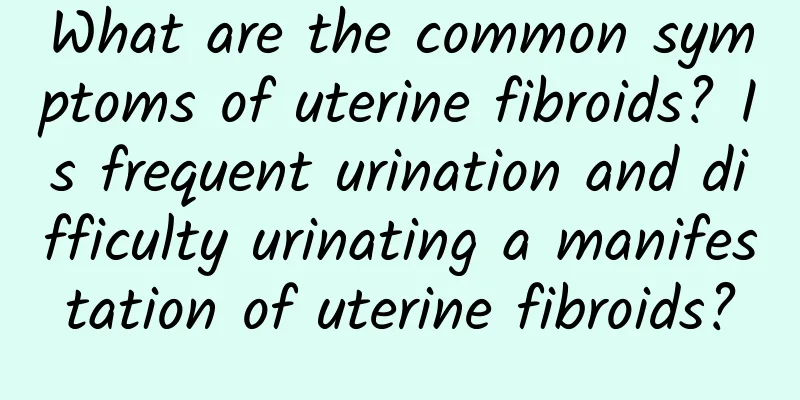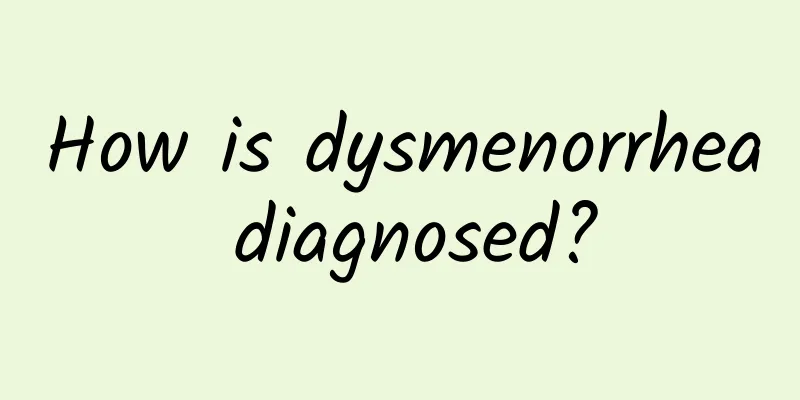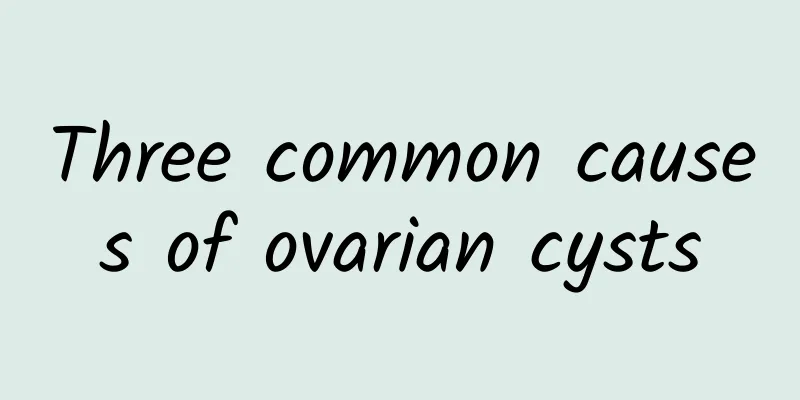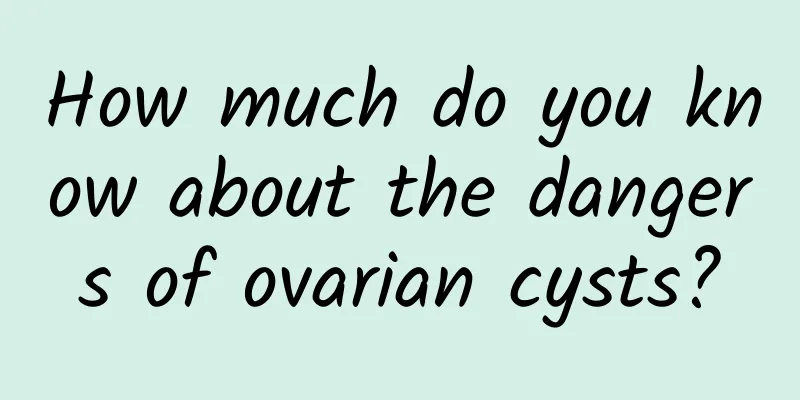What are the common symptoms of uterine fibroids? Is frequent urination and difficulty urinating a manifestation of uterine fibroids?

|
Gynecological uterine fibroids are mostly multiple diseases, mostly benign diseases. Therefore, female friends should not be too impatient and worried. They should pay attention to facing it with a calm attitude. In addition, not all uterine fibroids need treatment. If the disease is discovered early and well regulated in the early stage, it will be of great help to the improvement of the disease. What are the most common symptoms of uterine fibroids? 1. Uterine bleeding: This is a common symptom of uterine fibroids, and more than half of patients usually have such symptoms. If long-term bleeding is not treated in time, bleeding anemia may occur. When the fibroids slowly increase, the endometrial area will become larger and larger, which is easy to cause endometrial hyperplasia, or submucosal fibroids usually manifest as prolonged menstruation. 2. Pain: About 40% of people suffer from abdominal pain caused by uterine fibroids. Of course, there are also patients with dysmenorrhea and back pain, which usually manifests as lower abdominal swelling or back pain, but it is generally not very serious. 3. Menstrual abnormalities: This is mainly manifested by a shortened menstrual cycle, usually once every 20 days, or a prolonged menstrual period and increased bleeding. 4. Compression syndrome: This is also a very common symptom of uterine fibroids. This usually occurs when the fibroids compress the surrounding organs. If the pelvic veins are compressed, lower limb edema will occur, compressing the pelvic tissues and nerves, causing lower abdominal pain and back pain; compressing the bladder, urethra or rectum, causing frequent urination, dysuria, urinary retention or constipation; compressing the ureter can cause ureteral or renal hydrops; compressing the pelvic blood vessels and lymphatic vessels can cause lower limb edema. 5. Abdominal mass: Generally speaking, if the uterine fibroid is less than 3 months old, it is not easy for patients with a large gestational uterus to have an abdominal mass. The patients who can touch it are generally in the middle of the lower abdomen, hard and uneven. Abdominal mass is usually the main complaint of patients with uterine fibroids, up to 69.6%. Sometimes it may be the only symptom of fibroids. Uterine fibroids are generally located in the middle of the lower abdomen, a few may be biased to the lower abdomen, hard or uneven; most are degenerated, soft, and smooth; most do not grow fast; a few grow fast or hide pain, and malignant changes should be suspected. The above is an introduction to the common symptoms of uterine fibroids. Experts remind female friends that uterine fibroids are very harmful. If you are sure that you have this disease, you must go to the hospital for examination and treatment in time and treat it under the guidance of a doctor. You cannot handle it yourself, which can easily lead to misdiagnosis. |
<<: How to identify uterine fibroids and how to use medication for uterine fibroids
>>: Symptoms of uterine fibroids What are the causes of uterine fibroids
Recommend
What's wrong with having two periods in one month?
What's wrong with having two periods in one m...
DIY simple hydrogen peroxide reagent! The public detected 3 residues
The simple hydrogen peroxide (hydrogen peroxide) ...
Here are five things you need to check before having a painless abortion:
Painless abortion is one of the abortion methods....
Briefly talk about the symptoms of irregular menstruation
Nowadays, women are prone to menstrual irregulari...
How much harm does abortion do to women? Listen to the doctor
Abortion is a common measure for many women to te...
What should you pay attention to after a miscarriage? Pay attention to these 8 points
According to relevant data, the number of abortio...
Methods for preventing vulvar leukoplakia in children
Nowadays, vulvar leukoplakia has become a common ...
What are the symptoms of second-degree cervical erosion in women? How to treat second-degree cervical erosion in women?
There are more and more types of diseases in wome...
The most common early symptoms of ectopic pregnancy in daily life
Ectopic pregnancy is one of the most common gynec...
What are the factors that induce vaginitis?
What are the factors that induce vaginitis? Which...
What are the common harmful manifestations of uterine fibroids?
Among gynecological diseases, I believe most peop...
How to choose a hospital for uterine adnexitis
In clinical practice, some women suffer from adne...
Gastric reduction surgery reduces hunger and Baiyun loses 23 kg
A "super obese person" weighing 300 kil...
Long-term consequences of untreated cervical erosion
If cervical erosion is not treated for a long tim...
Consumers' Foundation: US beef still has concerns about L-type atypical mad cow disease
The controversy over American beef is raging. The...









